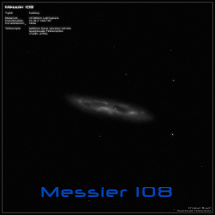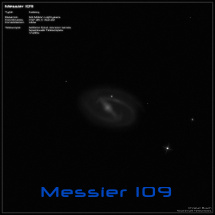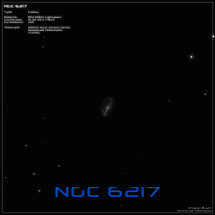
Galaxies are accumulations of many billions of stars, planetary systems, gas nebulae, dust clouds and dark matter. They can reach a diameter of some 100,000
light years. They are divided into several classes using a scheme devised by Edwin Hubble, the most important being "spiral galaxies" and "elliptical galaxies".
1) Spiral galaxies have a flat disk, a central bulge (core region of the galaxy), and the familiar spiral arms. The largest spiral galaxies (so-called "Super Spirals")
can reach a diameter of up to 600,000 light-years, smaller spirals, on the other hand, are only 35,000 light-years in size. Because no new stars are formed in the
bulge and it therefore contains mostly old stars, the core of a spiral galaxy glows yellowish to reddish. In the center there is usually a supermassive black hole
with a mass of many millions of suns. The known spiral arms are not formed by the stars themselves, but are rather to be regarded as density waves, into which
stars and gas masses run several times per revolution. This compresses the existing gas and new stars are formed, which often glow bluish and give the arms
their color. The stellar density in the spiral arms is only 20% higher than in the regions in between, which may seem surprising.
2) Elliptical galaxies have a uniform distribution of light and, unlike spiral galaxies, do not have conspicuous structures. It is assumed that most ellipses originate
from merging processes. This is supported by the fact that in dense galaxy clusters the proportion of elliptical galaxies is 50%, while otherwise it is 10%. Their
diameter can be up to 300,000 light-years, and the halo can even extend up to a million light-years into space. Such a huge galaxy can contain up to 10 trillion
solar masses. The color is usually yellowish because there is no gas for new stars to form, so the stars are many billions of years old. Although a large fraction
of elliptical galaxies are flattened, most rotate little if at all. If you look at the individual stars, they do not move on an elliptical orbit around the center, but move
completely independently in all three directions of space. In the halo of an ellipse you can find up to 40,000 globular clusters and in the center a supermassive
black hole, which can weigh up to 50 billion solar masses.
While galaxies are usually only visible as nebulous, luminous patches in a small telescope, spiral arms, dark dust bands and many other structures stand out in
a large telescope.































































